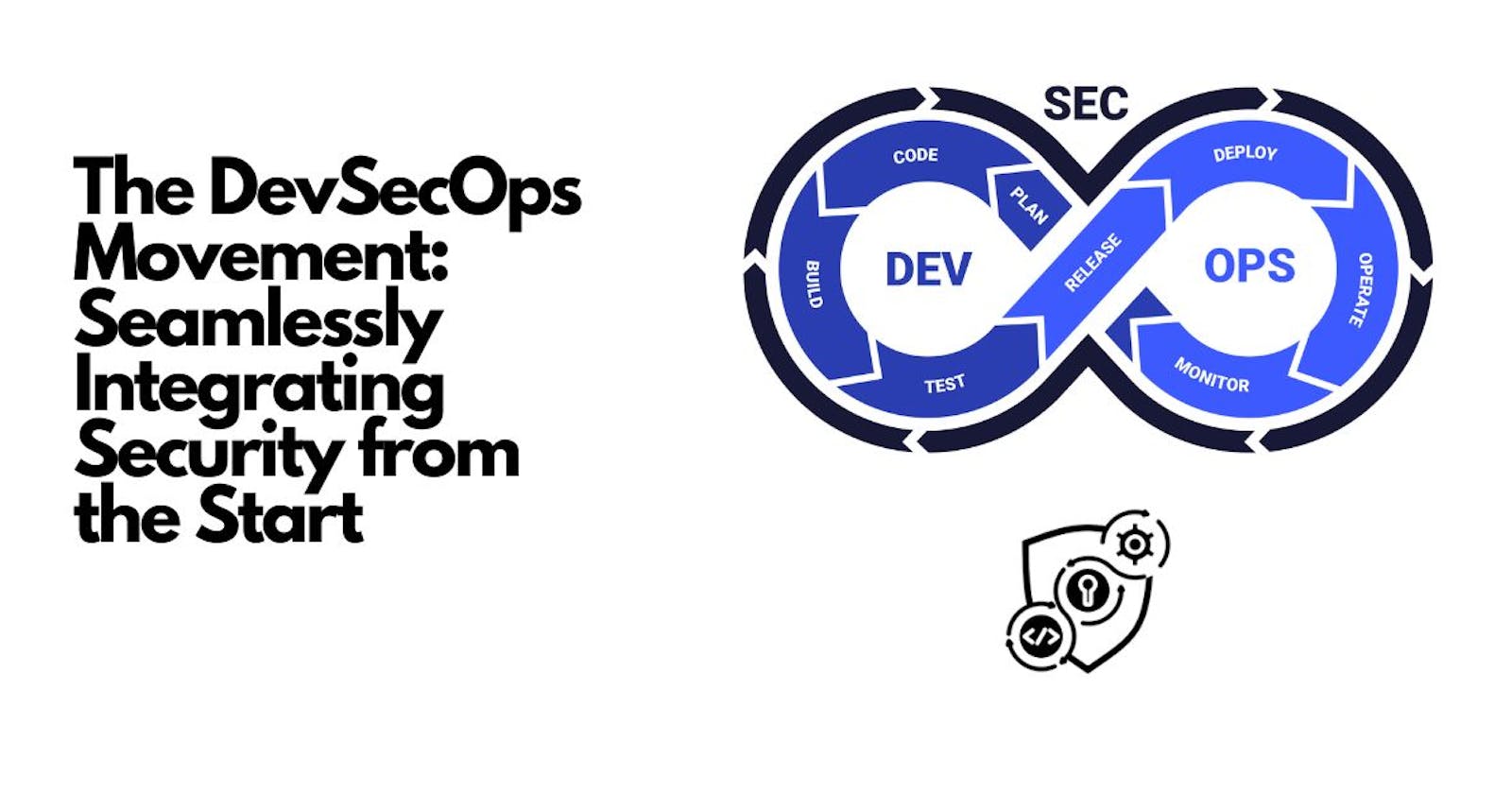Table of contents
- Introduction:
- Understanding DevSecOps
- Key Principles of DevSecOps
- Shift-Left: Embracing Early Security Integration
- Automation: Streamlining Security Checks
- Collaboration and Culture: Fostering a Security Mindset
- Continuous Monitoring: Proactive Security Management
- Security as Code
- Threat Intelligence and Response
- Best Practices and Tools
- Conclusion
- Thank You
Introduction:
In the ever-evolving landscape of software development, the need for security has become paramount. Traditionally, security was an afterthought, often bolted on at the end of the development cycle. However, with the rise of cyber threats, this approach is no longer sufficient. Enter DevSecOps, a paradigm shift that integrates security practices seamlessly into the entire software development lifecycle.
Understanding DevSecOps
DevSecOps is not just about adding security to DevOps; it's about changing the mindset around security. It involves integrating security practices into every phase of the development process, from planning and design to deployment and operations. This holistic approach ensures that security is not an obstacle but an integral part of the development workflow.
Key Principles of DevSecOps
Shift-Left: Embracing Early Security Integration
One of the core principles of DevSecOps is the "shift-left" approach. This means addressing security considerations as early as possible in the development process. By integrating security from the outset, organizations can catch and fix vulnerabilities before they become more costly and time-consuming to resolve later in the cycle.
Automation: Streamlining Security Checks
Automation is a key enabler of DevSecOps. By automating security checks such as vulnerability scanning, code analysis, and compliance testing, organizations can ensure that security is consistently applied across all stages of development. This not only improves efficiency but also helps maintain a high level of security without slowing down the development process.
Collaboration and Culture: Fostering a Security Mindset
DevSecOps emphasizes collaboration and a shared responsibility for security among all stakeholders. This requires a cultural shift where security is everyone's concern, not just the responsibility of a dedicated team. Building a security-conscious culture involves education, training, and clear communication of security policies and best practices.
Continuous Monitoring: Proactive Security Management
Continuous monitoring is a key aspect of DevSecOps. It involves actively monitoring applications and infrastructure for security threats and vulnerabilities in real-time. This allows teams to respond quickly to emerging threats and maintain a proactive security posture.
Security as Code
Similar to infrastructure as code (IaC), security as code is a concept where security policies and controls are defined and managed as code. This approach allows for consistency, repeatability, and versioning of security configurations, making it easier to manage security at scale.
Threat Intelligence and Response
DevSecOps integrates threat intelligence and incident response capabilities into the development and deployment process, enabling teams to proactively address security threats and respond effectively to incidents.
Best Practices and Tools
Implementing DevSecOps requires a combination of best practices and tools. Some best practices include:
Conducting regular security training for all team members
Implementing a strong access control policy
Performing regular security assessments and audits
Using secure coding practices
Employing encryption for data at rest and in transit
Implementing strong authentication and authorization mechanisms
There are also several tools available to help organizations implement DevSecOps practices:
Static Application Security Testing (SAST) tools: These tools analyze application source code for security vulnerabilities.
Dynamic Application Security Testing (DAST) tools: These tools test running applications for vulnerabilities.
Container Security Scanning tools: These tools scan container images for vulnerabilities.
Vulnerability Management tools: These tools help manage and prioritize vulnerabilities across the software stack.
Security Information and Event Management (SIEM) tools: These tools provide real-time analysis of security alerts and events.
Conclusion
DevSecOps represents a fundamental shift in how organizations approach security in software development. By integrating security practices into the entire development lifecycle, from planning to deployment, DevSecOps enables organizations to build more secure and resilient software without compromising speed and agility. In today's threat landscape, where security breaches are a constant risk, DevSecOps is not just a best practice but a necessity for any organization serious about security.
